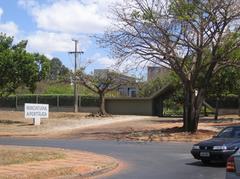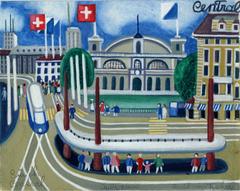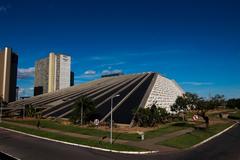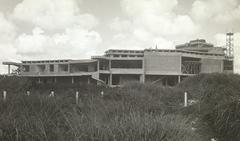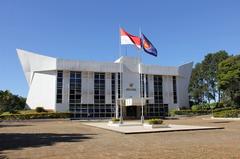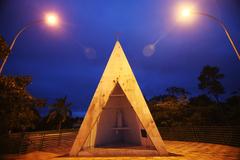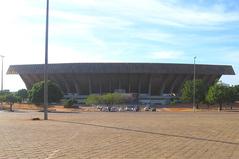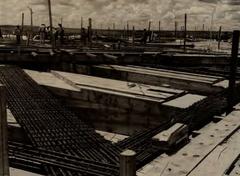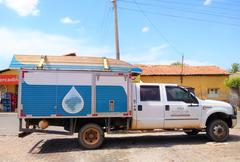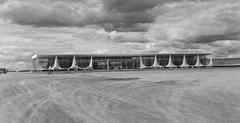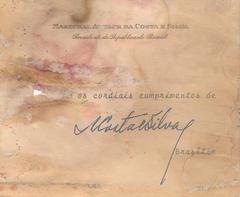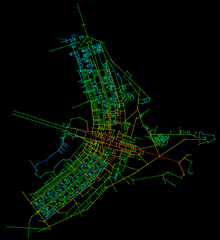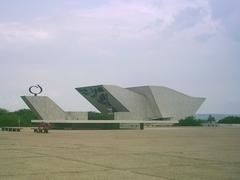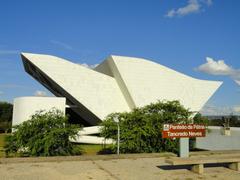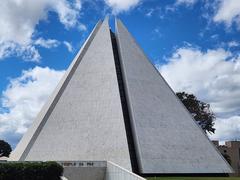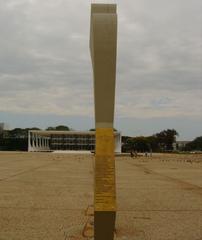
Central Brasília Visiting Hours, Tickets, and Historical Sites Guide
Date: 04/07/2025
Introduction: The Legacy and Significance of Central Brasília
Central Brasília is Brazil’s purpose-built modernist capital—a testament to ambition, unity, and innovation. Conceived under President Juscelino Kubitschek’s bold vision to propel the nation “fifty years in five,” Brasília was constructed between 1956 and 1960 to promote regional development and symbolize a forward-looking national identity (LacGeo; Wikipedia). Situated on the central plateau at 1,100 meters elevation, the city’s location was both practical and deeply symbolic, positioning the federal capital at the heart of the country (Britannica).
The city’s innovative design—known as the Plano Piloto—was masterminded by Lúcio Costa and Oscar Niemeyer, with lush landscape architecture by Roberto Burle Marx (Wikipedia). Central Brasília’s Monumental Axis features iconic government buildings and cultural sites, while planned residential superquadras foster community living. Recognized as a UNESCO World Heritage Site in 1987 and later as a UNESCO City of Design, Brasília stands as a global reference in architecture and urban planning (Wikipedia).
Visitors will discover a city rich in history, culture, and architectural marvels—from the soaring Cathedral of Brasília to the reflective pools of the Itamaraty Palace. This guide provides essential information on visiting hours, ticketing, accessibility, and travel tips, along with insights into Brasília’s social transformation and ongoing urban challenges. Whether you are drawn by modernist architecture, Brazilian history, or vibrant cultural life, Central Brasília offers a unique journey into the heart of Brazil (Hurfpost Brasil; PlanetWare; Artchitectours).
A Visitor’s Guide: History, Urban Planning, and Key Attractions
Historical Context: Vision, Ambition, and National Integration
The creation of Brasília was rooted in a desire to unify Brazil and shift development away from the coastal cities. The 1891 Republican Constitution mandated relocating the capital to the country’s interior (Wikipedia; LacGeo). President Kubitschek’s campaign promise to achieve “fifty years in five” spurred the rapid construction of Brasília, culminating in its inauguration on April 21, 1960 (LacGeo; Wikipedia).
Urban Planning: The Plano Piloto and Modernist Vision
Brasília’s Plano Piloto is celebrated for its airplane-shaped layout, with the Eixo Monumental (Monumental Axis) hosting government and cultural buildings, and the Eixo Rodoviário connecting residential superquadras (Wikipedia; Britannica). The city’s main square, Praça dos Três Poderes, is the epicenter of executive, legislative, and judicial powers (Britannica). The modernist architecture—most notably by Niemeyer—earned Brasília its place as a UNESCO World Heritage Site (Wikipedia; LacGeo).
Practical Information: Visiting Hours, Tickets, and Accessibility
Opening Hours and Tickets
- National Congress: Mon–Fri, 9:00 AM–5:00 PM. Guided tours available in Portuguese and English; book online or on-site. Free entry.
- Cathedral of Brasília: Daily, 7:00 AM–7:00 PM. Free entry.
- Itamaraty Palace: Tues–Fri, 9:00 AM–12:00 PM & 2:00 PM–5:00 PM. Free guided tours; advance reservation recommended.
- Palácio da Alvorada: Exterior viewing only, daily; interior visits by special invitation.
Getting There and Around
Brasília is accessible by metro, bus, taxi, and car. The city’s central areas are pedestrian-friendly:
- Metro: Central Station offers easy access to the Monumental Axis.
- Bus: Frequent routes connect to satellite towns and the airport.
- Parking: Limited near major sites; public transport is recommended.
Accessibility
Most major sites offer wheelchair access and visitor facilities, but check specific venues in advance for details.
Guided Tours and Travel Tips
- Guided tours (walking, cycling, or by boat) enrich the experience, especially for architecture and history enthusiasts.
- Early mornings and late afternoons are ideal for visits and photography.
- Weekdays are less crowded; weekends may feature local events and markets.
- Sun protection and comfortable footwear are recommended.
Social and Demographic Transformation
The building of Brasília attracted workers (“candangos”) from across Brazil, especially the Northeast, shaping a diverse, multicultural city (Britannica). Residential superquadras aimed to foster community but have been critiqued for uniformity (Britannica). Brasília’s population grew rapidly, with the Federal District now home to over four million people.
National and Political Importance
Central Brasília is the seat of the federal government, with the Praça dos Três Poderes housing the Palácio do Planalto (Executive), National Congress (Legislative), and Supreme Federal Court (Judiciary) (Britannica). The city’s design physically represents the separation of powers and aspirations for transparency and unity (LacGeo; Wikipedia).
Enduring Legacy, Critiques, and Contemporary Life
Brasília’s modernist ideals have inspired global urbanism but also drawn criticism for car dependency, social segregation, and urban alienation (Curbed; Ryan J. Hite). However, vibrant markets, green parks, and cultural institutions have helped humanize and enliven the city (TripJive; Hurfpost Brasil).
Architectural and Cultural Highlights
Key Landmarks
- Cathedral of Brasília: Niemeyer’s hyperboloid masterpiece; stained-glass interior by Marianne Peretti.
Hours: Daily, 8:00 AM–7:00 PM. Free entry. - National Congress: Twin towers flanked by domes; guided tours available Mon–Fri, 9:00 AM–5:00 PM.
- Palácio da Alvorada: Presidential residence on Lake Paranoá; exterior viewing daily.
- Itamaraty Palace: Ministry of Foreign Affairs; guided tours Tues–Fri, 9:00 AM–12:00 PM & 2:00 PM–5:00 PM.
- Esplanada dos Ministérios: Avenue lined with ministry headquarters; accessible public spaces.
- Praça dos Três Poderes: Executive, legislative, and judiciary buildings in one symbolic plaza.
Museums and Cultural Institutions
- Centro Cultural Banco do Brasil (CCBB): Art exhibitions and performances; Tues–Sun, 9:00 AM–9:00 PM.
- Museu Nacional da República: Brazilian art and culture; Tues–Sun, 9:00 AM–7:00 PM. Free entry.
- Memorial JK: Honors city founder Juscelino Kubitschek; Tues–Sun, 9:00 AM–6:00 PM. Free entry.
- Teatro Nacional Claudio Santoro: Concerts and performances; refer to schedule.
Religious and Spiritual Sites
- Santuário Dom Bosco: Blue Murano glass windows; daily, 7:00 AM–6:00 PM. Free entry.
Parks and Nature
- Parque Nacional de Brasília: Hiking and mineral pools; daily, 7:00 AM–5:00 PM. Free entry.
- Lago Paranoá: Water activities; public access daily.
- Parque da Cidade Sarah Kubitschek: Urban park; daily, 5:00 AM–10:00 PM.
- Jardim Botânico de Brasília: Cerrado biodiversity; Tues–Sun, 8:00 AM–5:00 PM.
Observation Points
- Torre de TV: 360-degree city views and crafts market; daily, 9:00 AM–6:00 PM.
Markets and Local Experiences
- Feira do Guará: Local cuisine and crafts; Fri & Sat, 5:00 PM–11:00 PM.
Visitor Tips
- Guided Tours: Highly recommended for in-depth exploration (Culture Activities).
- Accessibility: Most sites are wheelchair accessible; verify specific locations in advance.
- Best Times to Visit: Early or late in the day; the dry season (May–September) is preferable.
- Dress Code: Modest attire for religious sites; comfortable shoes for walking.
- Safety: Central areas are generally safe; use common precautions.
- Cultural Events: Check local calendars for festivals and exhibitions.
Juscelino Kubitschek Memorial: History and Visitor Information
The Juscelino Kubitschek Memorial celebrates the president who founded Brasília. Opened in 1981, it houses Kubitschek’s tomb, a museum, and a library, displaying artifacts and documents chronicling Brasília’s creation.
- Hours: Tues–Sun, 9:00 AM–5:00 PM. Closed Mon.
- Admission: Free.
- Guided Tours: Available on request.
- Accessibility: Ramps and accessible pathways throughout.
Photography is permitted in most areas; mornings offer the best light. The memorial’s gardens and pools provide excellent photo opportunities. Nearby, visitors can easily reach other landmarks such as the Cathedral and National Congress.
Useful Links:
Frequently Asked Questions (FAQs)
Q: Do I need tickets to visit the National Congress?
A: Entry is free; guided tours may require advance booking.
Q: Are the main attractions accessible for visitors with disabilities?
A: Most are, but check each site for specific details.
Q: What’s the best time to visit Central Brasília?
A: Early mornings or late afternoons, especially during the dry season (May–September).
Q: How do I get around between attractions?
A: Public transit, ride-hailing apps, and walking for central sites; car rental for more distant locations.
Q: Are virtual tours available?
A: Many attractions offer virtual tours—visit their official websites for details.
Summary and Call to Action
Central Brasília is a living showcase of visionary architecture, national ambition, and dynamic cultural life. Its modernist landmarks, green spaces, and diverse communities offer a unique and immersive experience for all visitors (Wikipedia; Britannica; Hurfpost Brasil). Despite criticisms of its design, the city continually evolves, blending historical significance with contemporary vibrancy (Curbed; Ryan J. Hite).
Plan your trip today, explore with the Audiala app for guided tours and itineraries, and discover why Brasília remains a model of urban innovation and a compelling travel destination in the heart of Brazil.
References
- Hurfpost Brasil: Why You Should Visit Brasília
- LAC Geographic: Brasília Federal Capital, Brazil
- PlanetWare: Tourist Attractions in Brasília
- Memorial JK Official Site
- Britannica: Brasília
- Wikipedia: History of Brasília
- Wikipedia: Brasília
- Ryan J. Hite: The Dream and Reality of Brazil’s Utopian Capital
- Artchitectours: Brasília Tours
- Curbed: Brasília Urban Planning and Architecture
- World History Journal: History of Brasília

